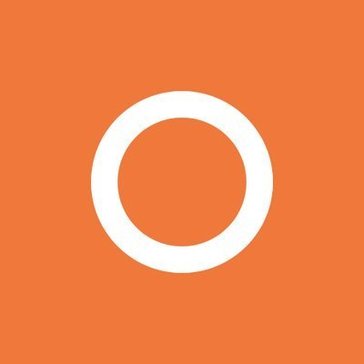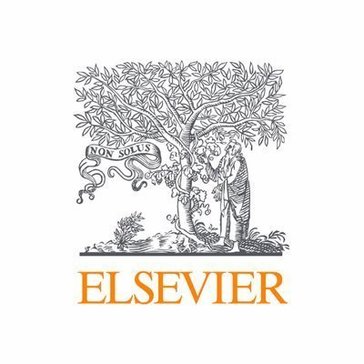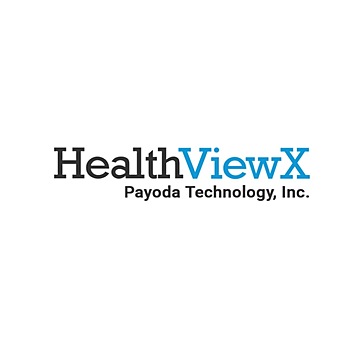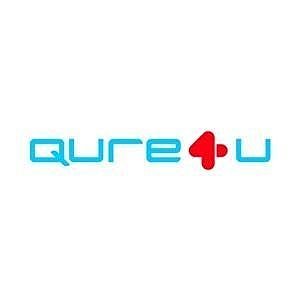Top Disease Management Softwares
Disease Management software centralizes patient information, streamlining healthcare processes for chronic disease care. This technology offers tools to track patient progress, set reminders, and facilitate communication between patients and providers. By analyzing health data, medical professionals can identify trends, predicting potential health risks. Disease Management software aids in craftin... Read More
12 companies found
Omada Health
Product Description
Omada Health offers a digital health program designed to help people make meaningful lifestyle changes, focusing primarily on chronic disease prevention and management. Their software combines the personal touch of human coaching with smart technology, which makes it easier for users to pursue healthier habits that stick. When you sign up for Omada, you’ll be matched with a professional health co... Read More
Users
- • No Data
Industries
- • No Data
Market Segment
- • No Data
Product Description
RxPx is a user-friendly tool designed to help healthcare providers streamline their practice management and enhance patient care. It simplifies everyday tasks so medical professionals can focus more on their patients and less on administrative duties. With RxPx, managing appointments, patient records, billing, and communications becomes much simpler. The software offers an intuitive interface tha... Read More
Users
- • No Data
Industries
- • No Data
Market Segment
- • No Data
Product Description
""" Arezzo Software is crafted with the modern business in mind, offering straightforward yet powerful tools to simplify your daily operations. Designed for small and medium-sized enterprises, Arezzo focuses on making key business functions more accessible, without drowning you in tech speak or overly complicated features. Imagine managing your team's projects, tracking customer interactions, an... Read More
Users
- • No Data
Industries
- • No Data
Market Segment
- • No Data
Guiding Care
Product Description
Guiding Care is a straightforward software solution designed to help healthcare organizations manage and coordinate patient care more efficiently. It focuses on making the daily tasks of care providers simpler, so they can spend more time focusing on their patients. With Guiding Care, you get tools that streamline everything from patient assessments to care plan management, all in one place. At i... Read More
Users
- • No Data
Industries
- • No Data
Market Segment
- • No Data
Product Description
Midas Health Analytics, now a part of symplr, brings advanced tools and insights to healthcare professionals seeking to use data for improved decision-making and efficiency. Designed to simplify the complex world of healthcare data, Midas Health Analytics provides easy-to-understand reports and analytics that help healthcare organizations enhance their quality of care and operational performance. ... Read More
Users
- • No Data
Industries
- • No Data
Market Segment
- • No Data
PaceMateLIVE
Product Description
PaceMateLIVE is a comprehensive software solution designed to simplify and improve the management of cardiac data for healthcare providers. At its core, PaceMateLIVE helps clinicians more effectively monitor and manage patients with implanted cardiac devices by providing a seamless and efficient platform for remote monitoring and data management. The main objective of the software is to make the ... Read More
Users
- • No Data
Industries
- • No Data
Market Segment
- • No Data
Product Description
HealthViewX Chronic Care Management software is a straightforward, user-friendly tool designed to help healthcare providers manage and support patients with chronic conditions. This software aims to make the care process smoother and more efficient for both providers and patients. At its core, HealthViewX focuses on simplifying the day-to-day tasks that come with managing chronic conditions. It h... Read More
Users
- • No Data
Industries
- • No Data
Market Segment
- • No Data
ClinicalKey
Product Description
ClinicalKey is a comprehensive online resource designed to make medical information quickly accessible to healthcare professionals. Developed by Elsevier, a trusted name in medical and scientific information, ClinicalKey serves as a vital tool for doctors, nurses, and other medical staff looking to make well-informed decisions. The platform offers a wide range of medical content that includes pe... Read More
Users
- • No Data
Industries
- • No Data
Market Segment
- • No Data
MyCarePlan
Product Description
MyCarePlan is a straightforward, easy-to-use software designed for healthcare professionals who want to improve their patient care without getting bogged down in administrative tasks. Whether you are a small clinic or a large healthcare provider, this software helps you streamline your operations, so you can focus more on your patients. With MyCarePlan, managing patient information becomes hassle... Read More
Users
- • No Data
Industries
- • No Data
Market Segment
- • No Data
Product Description
HealthEC is all about simplifying and improving how healthcare providers and organizations manage patient care. This software-as-a-service (SaaS) solution combines essential tools needed to tackle various healthcare challenges all in one place. Think of it as a digital assistant that helps healthcare teams keep track of patient data, spot potential health issues early, and improve overall treatmen... Read More
Users
- • No Data
Industries
- • No Data
Market Segment
- • No Data
What is Disease Management software and how does it work?
Understanding Disease Management Software
Disease Management software is a specialized tool designed to facilitate the monitoring and management of chronic diseases. This category of software aims to enhance the quality of healthcare delivery by providing healthcare providers with the necessary tools to track patient conditions efficiently. By leveraging Disease Management software, healthcare providers can ensure a structured approach to treating chronic illnesses, contributing to improved patient outcomes.
Core Functionality and Objectives
The primary objective of Disease Management software is to support healthcare providers in coordinating and optimizing patient care. This is achieved through systematic tracking of disease-specific data over time. Healthcare providers can use the software to collect, analyze, and interpret vital patient data, which assists in developing comprehensive treatment plans tailored to individual patient needs. This data-driven approach enhances decision-making processes, allowing for timely interventions and adjustments to treatment protocols.
Working Mechanism
-
Data Collection and Integration
Disease Management software is equipped to gather extensive data from various sources, including electronic health records (EHR), patient self-reports, and laboratory results. It integrates this data to offer a holistic view of the patient's health status. By consolidating diverse datasets into a cohesive system, it streamlines the workflow, making it easier for healthcare professionals to access and utilize pertinent patient information effectively. -
Patient Monitoring and Assessment
The software offers continuous monitoring capabilities, enabling real-time tracking of a patient's condition. It uses predictive analytics to assess risk factors and disease progression, warning healthcare providers when significant changes occur. By providing timely alerts and notifications, the software aids in early identification of potential complications, reducing the likelihood of severe health events. -
Treatment Planning and Management
Disease Management software supports the development of detailed treatment plans customized for each patient's unique situation. Providers can set health goals and track progress, ensuring that the care delivered aligns with best practice guidelines and the patient's specific health requirements. The software facilitates collaborative care by enabling information sharing amongst multidisciplinary teams involved in the patient's treatment. -
Patient Engagement and Education
Engaging patients in their own care is crucial for effective disease management. Disease Management software often includes patient portals where individuals can access their health information, receive educational materials, and communicate with their healthcare team. By involving patients in their healthcare journey, the software empowers them to make informed decisions and adhere to prescribed treatments, leading to better health outcomes. -
Analytics and Reporting
One of the key components of Disease Management software is its ability to offer extensive analytics and reporting features. These tools allow healthcare providers to generate reports on treatment efficacy, patient compliance, and overall population health trends. By analyzing this data, providers can identify areas for improvement in care delivery and implement strategies to enhance service quality.
Disease Management software serves as a critical infrastructure in modern healthcare, promoting coordinated care and improving chronic disease outcomes through its comprehensive suite of functionalities.
How can Disease Management software improve patient outcomes?
Personalized Patient Care
Disease Management software plays a critical role in creating personalized healthcare plans. By collecting comprehensive patient data, it helps in developing tailored treatment strategies. These customized plans ensure that each patient receives specific care based on their unique needs, promoting better health outcomes. The software can integrate lifestyle habits, medication adherence, and medical histories, providing a holistic view necessary for individualized care plans.
Enhanced Monitoring and Reporting
Through Disease Management software, continuous monitoring of patient health metrics is possible. This real-time data tracking aids healthcare providers in overseeing any changes in health conditions promptly. Timely adjustments in treatment plans can be made based on accurate data, ultimately minimizing complications and enhancing recovery rates. By analyzing trends and patterns, caregivers can anticipate potential health risks, keeping patients better managed.
Patient Engagement and Education
Disease Management software facilitates greater patient involvement in their own healthcare. It often includes educational resources and tools that empower patients to understand their conditions. By engaging patients through reminders and alerts, they remain informed about medication schedules and lifestyle changes. Increased patient literacy in disease management can result in higher compliance rates and proactive health choices, fostering improved overall outcomes.
Coordination of Care
The integration capabilities of Disease Management software enable seamless collaboration among healthcare professionals. By ensuring a centralized access to patient records, there is a reduction in redundant tests and assessments. Effective communication among care teams leads to more coordinated treatment strategies. The software supports multidisciplinary approaches, which are crucial for managing complex conditions holistically.
Data-Driven Decision Making
By utilizing predictive analytics, Disease Management software provides insights that assist healthcare professionals in decision-making. Understanding risk factors and probable health trajectories enables clinicians to implement preventive measures. These insights allow for more precise interventions, mitigating adverse health events. With accurate diagnoses and evidence-based treatment plans, patient satisfaction and success rates improve significantly.
Reduction in Hospital Readmissions
Disease Management software contributes to minimizing hospital readmissions by ensuring continuity of care even after discharge. Patients receive ongoing supervision, including home care instructions and follow-up checks. By identifying early signs of relapse or complications, timely interventions can be made. Reduced hospital readmissions not only benefit patient health but also lessen the financial burden on healthcare systems.
Encouragement of Preventive Measures
This software emphasizes the importance of preventive healthcare. Through risk assessments and screenings, potential health issues are identified early. Patients are encouraged to adopt preventive measures, reducing the escalation of chronic diseases. By focusing on prevention, the severity and frequency of diseases can be minimized, enhancing the quality of life for patients. Disease Management software allows for a proactive approach in maintaining health, rather than reactive care.
By addressing these aspects, Disease Management software supports improved patient outcomes through personalized care, proactive engagement, coordinated efforts, and preventive strategies.
What features should you look for in Disease Management software?
When evaluating Disease Management software, it's important to identify key features that ensure effective and efficient management of disease-related data and processes. Here's a list of considerations:
Patient Data Management
-
Comprehensive Data Storage
Disease Management software should enable detailed patient data storage, including medical history, treatment plans, and ongoing health conditions. This ensures all relevant information is centralized and easily accessible. -
Real-time Data Access
Healthcare providers should have the capability to access patient data in real-time. This feature ensures prompt decision-making and timely interventions for patient care.
Care Coordination
-
Collaboration Tools
Effective Disease Management software should offer tools for seamless communication among healthcare professionals. This may include messaging systems or integrated platforms for sharing patient information. -
Interoperability
The software should integrate with other healthcare systems such as Electronic Health Records (EHR). This allows for a comprehensive view of patient care and streamlines data exchange across systems.
Monitoring and Alerts
-
Automated Alerts and Reminders
The software should provide automated alerts to notify providers or patients about necessary actions such as medication schedules or follow-up appointments, enhancing adherence to treatment plans. -
Health Monitoring
Look for features that allow for continuous health monitoring, including the integration of wearable devices. This allows for tracking vital signs and other health metrics critical to disease management.
Reporting and Analytics
-
Data Analytics
Disease Management software should offer robust analytics capabilities, enabling healthcare providers to analyze patient data to identify trends, outcomes, and areas needing intervention. -
Customizable Reports
The ability to generate and customize reports helps in assessing patient progress, improving treatment plans and facilitating communication with patients and stakeholders.
Patient Engagement
-
Patient Portals
Features like patient portals enable patients to access their health information, schedule appointments, and communicate with healthcare providers, fostering active participation in their care. -
Education and Support Tools
Educational resources and support tools within the software can empower patients to manage their conditions better, promoting self-care and adherence to treatment plans.
Compliance and Security
-
Regulatory Compliance
Ensure the software adheres to healthcare regulations such as HIPAA. This ensures the system protects patient privacy and data security. -
Data Encryption and Security
Robust security measures are critical. The software should have encrypted storage and secure data transmission to protect sensitive patient information.
Integration and Customization
-
Customizable Workflows
Disease Management software should allow customization of workflows to adapt to specific healthcare provider requirements and practices. -
Scalability
Choose a solution that can grow with your practice, accommodating increasing patient data and expanding services without compromising performance.
These features are crucial when selecting Disease Management software, ensuring it supports efficient management of patient care processes and enhances healthcare outcomes.
How does Disease Management software help healthcare providers manage chronic diseases?
Disease Management software plays a crucial role in supporting healthcare providers as they manage chronic diseases. This technology assists by streamlining processes, enhancing patient care, enabling proactive intervention, and fostering improved communication among healthcare teams.
Streamlining Workflow
Disease Management software integrates various healthcare processes, making it easier for providers to manage chronic diseases efficiently. The software includes features that automate administrative tasks, such as scheduling, charting, and billing. This automation reduces the time spent on paperwork, allowing healthcare professionals to dedicate more attention to patient care.
Enhancing Patient Care
One of the primary benefits of Disease Management software is improving patient care. The software offers tools for maintaining electronic health records (EHRs), which provide comprehensive and up-to-date information about patients’ health history. Access to such detailed records ensures that healthcare providers have all necessary data to make informed decisions regarding diagnosis and treatment options.
Enabling Proactive Intervention
Disease Management software aids in the early identification of potential health issues through predictive analytics. By analyzing trends and patterns within patient data, the system can alert healthcare providers about potential risks or deteriorating conditions. This proactive approach can lead to timely intervention, reducing the likelihood of severe health events and improving patient outcomes.
Facilitating Improved Communication
Effective communication is essential among healthcare teams for managing chronic diseases. Disease Management software serves as a centralized platform, facilitating information sharing among various healthcare professionals involved in the care of a patient. By ensuring all team members have access to the same data, misunderstandings and errors are minimized, leading to coordinated and effective care plans.
Supporting Patient Engagement
Disease Management software often includes patient portals that allow individuals to access their health information, such as lab results and appointment summaries. This transparency empowers patients to take an active role in managing their health. Features like medication reminders and educational resources available through the software encourage adherence to treatment plans and promote self-care, leading to better management of chronic diseases.
Optimizing Resource Utilization
The efficient management of healthcare resources is another vital aspect of Disease Management software. By providing insights into resource allocation and utilization, the software assists in optimizing the deployment of medical equipment, personnel, and other crucial resources. This optimization leads to reduced operational costs and improved service delivery.
Ensuring Compliance and Reporting
Healthcare providers must comply with various regulatory requirements. Disease Management software aids in maintaining accurate records and generating necessary reports for compliance purposes. By offering automated reporting and audit functionality, the software assists healthcare providers in meeting these obligations without disrupting their primary focus on patient care.
In summary, Disease Management software is an essential tool for healthcare providers managing chronic diseases. It enhances patient care, streamlines workflows, facilitates communication, enables proactive intervention, supports patient engagement, optimizes resource utilization, and ensures regulatory compliance—all of which contribute to more effective and efficient chronic disease management.
What are the benefits of using Disease Management software in healthcare?
Disease Management software provides numerous advantages to healthcare professionals and institutions. At its core, it aims to improve patient care, enhance efficiency, and reduce healthcare costs. Below, we explore the key benefits of employing such software in the healthcare sector.
Improved Patient Outcomes
Disease Management software enables healthcare providers to deliver personalized care. By maintaining detailed records of patients' medical histories, preferences, and treatment plans, providers can offer tailored interventions that lead to improved health outcomes. The software supports chronic disease management by monitoring patient data, facilitating early interventions, and reducing hospital admissions.
Enhanced Data Tracking and Analysis
One of the major benefits of Disease Management software is its ability to gather and analyze large volumes of patient data. This functionality helps in identifying trends and patterns that could indicate potential health issues before they become critical. Healthcare providers can track patient progress, evaluate treatment effectiveness, and adjust care plans accordingly. This data-driven approach fosters more efficient and effective disease management.
Increased Efficiency and Productivity
By automating routine tasks, Disease Management software reduces administrative burdens on healthcare staff, allowing them to focus more on patient care. Scheduling, record-keeping, and reporting can all be streamlined using the software, leading to increased productivity. This automation helps in minimizing errors and ensures that healthcare providers have more time for direct patient interaction.
Cost Reduction
Disease Management software contributes to significant cost savings for healthcare facilities. By optimizing care delivery and reducing unnecessary interventions, the software decreases hospital readmissions and emergency visits. Additionally, early diagnosis and preventive care, facilitated by the software's data insights, can prevent costly treatments or complications down the line.
Enhanced Patient Engagement
With Disease Management software, patients can actively participate in managing their health. Many platforms offer patient portals that allow individuals to access their medical records, monitor treatment plans, and communicate with healthcare providers. This engagement promotes adherence to treatment regimens and educates patients about their conditions, encouraging proactive disease management.
Facilitated Coordination of Care
In healthcare systems involving multiple providers, effective coordination is essential. Disease Management software creates a unified platform where all healthcare providers involved in a patient's care can access up-to-date information. This connectivity ensures a seamless flow of information across different service providers, enhancing collaborative care efforts and preventing communication lapses that might affect patient care.
Compliance and Reporting
Disease Management software helps healthcare providers comply with regulatory requirements by automating reporting processes and ensuring accurate documentation. It maintains patient data securely, following appropriate privacy standards such as HIPAA in the U.S., thus safeguarding sensitive information and minimizing legal liabilities.
In conclusion, the integration of Disease Management software into healthcare settings provides a comprehensive approach to managing chronic diseases. By improving patient outcomes, streamlining operations, and fostering engagement, it plays an integral role in modern healthcare systems. Its benefits underscore its potential to transform how chronic care is delivered, making it an essential tool for any healthcare institution.
How does Disease Management software ensure data privacy and security?
Encryption
Disease Management software employs encryption to protect sensitive health data. Encryption converts information into a secure format that can only be read by individuals with the proper decryption key. This ensures that patient data remains confidential during transmission and storage. Both symmetric and asymmetric encryption methods may be used, providing robust protection against unauthorized access.
Access Controls
Access controls are crucial in Disease Management software for maintaining data privacy and security. By implementing authentication protocols like multi-factor authentication (MFA), biometric verification, and unique user ID and password combinations, only authorized personnel can access specific data. This granular control over data access greatly reduces the risk of unauthorized data exposure or breaches.
Data Anonymization
To protect patient identities, Disease Management software may utilize data anonymization techniques. This process removes or masks personal identifiers from datasets, making it challenging to link data back to individual patients. Data anonymization is particularly beneficial for research purposes, where patient confidentiality must be maintained while analyzing large datasets.
Regular Audits
Routine security audits and assessments are essential components of Disease Management software. These audits evaluate the system for potential vulnerabilities and ensure compliance with relevant standards. Regular audits help identify security gaps and implement necessary improvements, thereby safeguarding patient information.
Compliance with Regulations
Disease Management software adheres to strict regulatory standards like the Health Insurance Portability and Accountability Act (HIPAA) in the U.S., the General Data Protection Regulation (GDPR) in Europe, and other regional healthcare regulations. Compliance dictates how data should be processed, stored, and shared, thereby providing a legal framework for data protection in healthcare.
Secure Data Storage
Data storage in Disease Management software is designed to prevent unauthorized access and data breaches. This involves using secure, private servers and cloud storage solutions with advanced security protocols. Backup systems with real-time synchronization ensure data integrity, making it accessible yet protected from loss or corruption.
Employee Training
Employee training programs on data privacy and security are implemented to ensure all personnel using Disease Management software understand best practices and protocols. Training often includes identifying phishing scams, implementing strong passwords, and adhering to organizational security policies. Educated employees act as the first line of defense against data breaches.
Incident Response Plans
Effective incident response plans are devised to address potential data breaches or security events. These plans outline immediate actions to contain breaches, assess the impact, and communicate with affected parties. Following a precise, rehearsed plan can minimize damage and restore systems to secure states efficiently.
Role-Based Permissions
Disease Management software often incorporates role-based permissions to enhance data privacy and security. This means that access to data is based on the user's role within the organization, allowing users to access only the information necessary for their job functions. Such stratification ensures that sensitive data remains protected and that access is limited to authorized users only.
By implementing these security measures, Disease Management software aims to safeguard sensitive patient data, maintaining privacy and securing system integrity against evolving threats.
What types of healthcare facilities can benefit from Disease Management software?
Hospitals and Health Systems
Hospitals and health systems are prime candidates for implementing Disease Management software. Such software helps to streamline patient workflows and manage chronic diseases systematically. By integrating patient data, hospitals can coordinate care efficiently, reduce hospital readmissions, and improve the overall quality of care. It serves as a centralized tool for managing patient outcomes and fostering interdisciplinary communication among healthcare providers.
Clinics and Outpatient Care Centers
Clinics and outpatient care centers use Disease Management software to manage a large volume of patients with chronic diseases like diabetes, asthma, and hypertension. This software aids in tracking patient progress, scheduling appointments, and ensuring compliance with treatment plans. Clinics can offer personalized care plans by analyzing individual patient data, leading to better health outcomes and patient satisfaction.
Rehabilitation Centers
Rehabilitation centers benefit from Disease Management software by organizing treatment processes for patients recovering from major surgeries or chronic illnesses. It assists healthcare providers in tracking therapeutic progress, managing medication schedules, and monitoring patient adherence to rehabilitation protocols. This leads to enhanced patient recovery and improved operational efficiency for rehabilitation centers.
Long-term Care Facilities
Long-term care facilities, such as nursing homes and assisted living centers, find Disease Management software valuable for overseeing patients with chronic and degenerative conditions. The software helps in managing recurring care tasks, updating patient records, and reducing medication errors. It enhances the facility's ability to deliver consistent and high-quality care over extended periods of time.
Specialty Care Centers
Specialty care centers, focusing on specific medical areas such as cardiology or oncology, use Disease Management software to streamline complex treatment regimes. By consolidating patient information and treatment data, these centers can offer targeted treatment plans. This system minimizes the risk of errors and ensures continuous care for patients dealing with complex health issues.
Primary Care Practices
Primary care practices leverage Disease Management software to maintain comprehensive patient records and manage routine check-ups for chronic conditions. The software supports preventive care strategies, which can result in early detection of health issues. By focusing on long-term health management, primary care providers can improve patient outcomes and foster strong patient-provider relationships.
Telehealth Providers
Telehealth providers utilize Disease Management software to extend their care services to remote patients, especially those managing chronic diseases. The software enables remote monitoring, virtual consultations, and efficient communication between patients and healthcare providers. This digital approach not only broadens access to care but also ensures continuity in treatment irrespective of geographical barriers.
Home Health Agencies
Home health agencies benefit from Disease Management software by coordinating in-home care for patients with chronic illnesses. This software ensures timely delivery of medical care, tracks medication schedules, and monitors patient recovery. It provides a platform for home health nurses to efficiently manage patient care and offer real-time updates to physicians and family members, enhancing the quality of care delivered at home.
By deploying Disease Management software, these healthcare facilities can foster a holistic approach to patient care, optimize resource management, and improve overall patient satisfaction.









